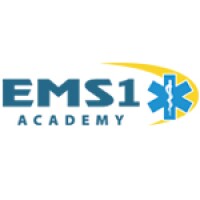The EMS1 Academy features " Communications and Documentation,” a 1.5-hour accredited course for EMTs. Complete the course to learn skills that should be used to communicate with family members, bystanders, people from other agencies and hospital personnel. Visit the EMS1 Academy to learn more and for an online demo.
Article updated Apr. 18, 2018
EMS educators and training officers are always looking for ways to improve communication, trust and teamwork among their personnel or students. Here are eleven exercises I have used in initial training courses, as well as refreshers and continuing education programs, to keep things lively and interesting while also working on some soft skills.
1. Save the egg
The students’ objective is to work together to “save the egg” from breaking when it is dropped from a specific height onto a specific surface. You choose the height and surface that works for you, but it is usually easiest to do outdoors.
Break the students, not the eggs, into small groups and instruct them to work together to use creative ideas and available objects to prevent the egg from breaking. You can give the groups specific equipment, or allow them to use anything they can find, keeping in mind potential clean-up.
I like to bring in a collection of stuff like a bucket, a ball of twine, some fabric and other household items. I either have each group choose one item or divide the items up randomly. This activity teaches communication skills, resourcefulness and problem-solving.
2. Blindfold work
Instruct students to accomplish a psychomotor objective together while blindfolded. Tasks can include making a sling and swath or assembling IV equipment.
If the students don’t know each other and it’s early in EMT class, have them identify different pieces of equipment, like an oxygen regulator or handheld nebulizer, while blindfolded. You can give them patient belongings they might encounter in the field, like a medical identification bracelet, walker or pill box.
Students collaborate and talk to each other, but must remain blindfolded. Teams can compete to see who can correctly identify their object first.
3. Treasure hunt
Have each group pick a medical condition or traumatic injury, written on slips of paper, out of a hat and collect items from the classroom or lab to treat that problem. Each group then presents their items and the other groups vote – not just on the amount and type of equipment they chose, but on how creative their choices are.
4. How they do things out there
This is a great icebreaker for a refresher course where participants may be experienced, but come from different service areas. Have each student stand and introduce themselves, have them give the class one example of something (an idea, a treatment, a policy, a protocol) from an EMS service outside their area that is either really great or really strange. Allow time for discussion of the ideas to give students the opportunity to see the variety of problem-solving solutions different agencies employ. Students may discover that what some find strange, others may use on a regular basis.
5. Black hole
Give each group of three to seven students a sheet or a tarp with a hole in the middle and a tennis ball. The object of the game is to keep the ball from falling through the hole or off the sheet for as long as possible. They can only touch the sheet and must keep the sheet tight for the duration of the exercise. This exercise practices teamwork, group communication, leadership and following directions. It is a great lead in to a unit on patient lifting, moving and extrication.
6. Redraw or re-enact
Each group chooses one member to leave the group to take a look at an image (given by the educator) and then return to the group. The group works together to recreate the image as accurately as possible based only on the description from the team member who saw it. Use this activity in an anatomy unit or review. Show students detailed pictures of an organ, such as the heart and its major vessels and chambers. As you review the students’ drawings, discuss the functions and problems of the organ.
An alternative to redrawing is reenacting. Show one person from each group an activity such as pit crew CPR or extrication of a patient from an ambulance collision, and the group must work together to re-enact the activity.
7. A penny for your thoughts
Use this activity as either an icebreaker or group work project. Each person or group pulls a penny from a jar. Using the year on the penny report back to the class on one or more of the following:
- A common EMS practice in that year and why
- The most significant advance in prehospital medicine that year
- An EMS practice that was in use that year that is still in use today (and why)
Again, awarding points adds a sense of reward and competition that keeps the activity fun, exciting and really draw students in.
8. Class mission statement
Have the class work together to develop a mission statement for the course. Each individual in the class should answer these questions in just a few words:
- What do we do?
- How do we do it?
- Who do we serve?
Have a note taker write down the responses on a board where everyone can see them. When more than one person gives the same or similar answer, give that answer an extra point.
Once all of the individuals have given their answer, the class collaborates to put the top choice(s) together in a statement of purpose for the course.
9. I never thought I would …
Ask each student to report the strangest, greatest, smelliest, saddest or happiest thing they have done or experienced that they would never have thought of before they were part of EMS.
10. Elevate any object
This silly exercise incorporates teamwork, communication, coordination, problem-solving and leadership skills. In groups of four to 10, students elevate and hold a soda can, suction container, emesis basin or bed pan in the air for at least five seconds. The challenge is that everyone in the group must touch the object the entire time from the ground and into the air, but cannot touch one another at any time.
11. Build-a-square workshop
This activity takes a little bit of prep by the instructor, but teaches teamwork and situational awareness. Decide how many students will be in each group. Set aside that number of identical squares of paper, one for each student. The squares can be made from index cards, Post-it notes, refusal forms or medication and inventory reports.
Cut each square into slightly different shapes (like a puzzle) and put all of the pieces from every square in the group into one envelope, so that the group must work together to reassemble each square.
During class, assign each group an envelope and give the students five minutes to work together to reassemble the shape so that each student has a perfect square in front of them. You can add variations like the students may not talk, point or otherwise communicate with each other.
Additional communication skills training activities
There are lots of teambuilding and group exercises training officers and EMS educators can use. Try these exercises or others to improve teamwork, communication, awareness and collaboration all while having a little bit of fun.
Share your successes with these activities or your other favorite team building exercises for EMS and fire personnel in the comments.














